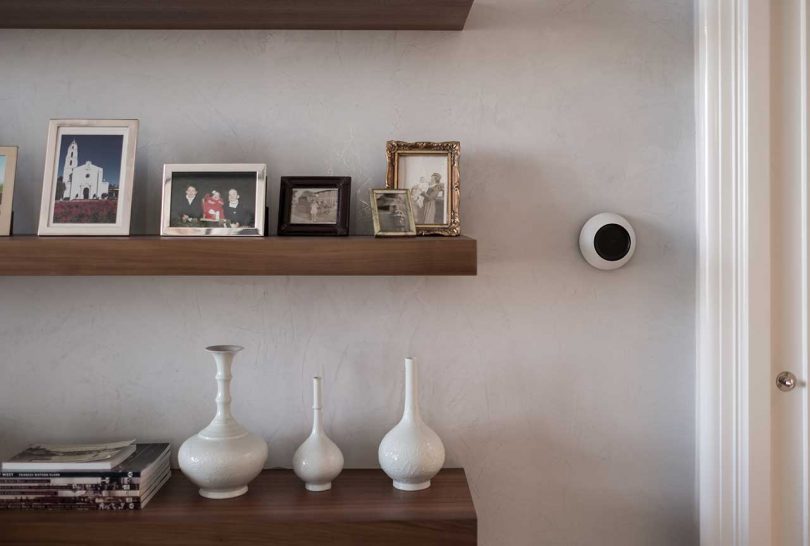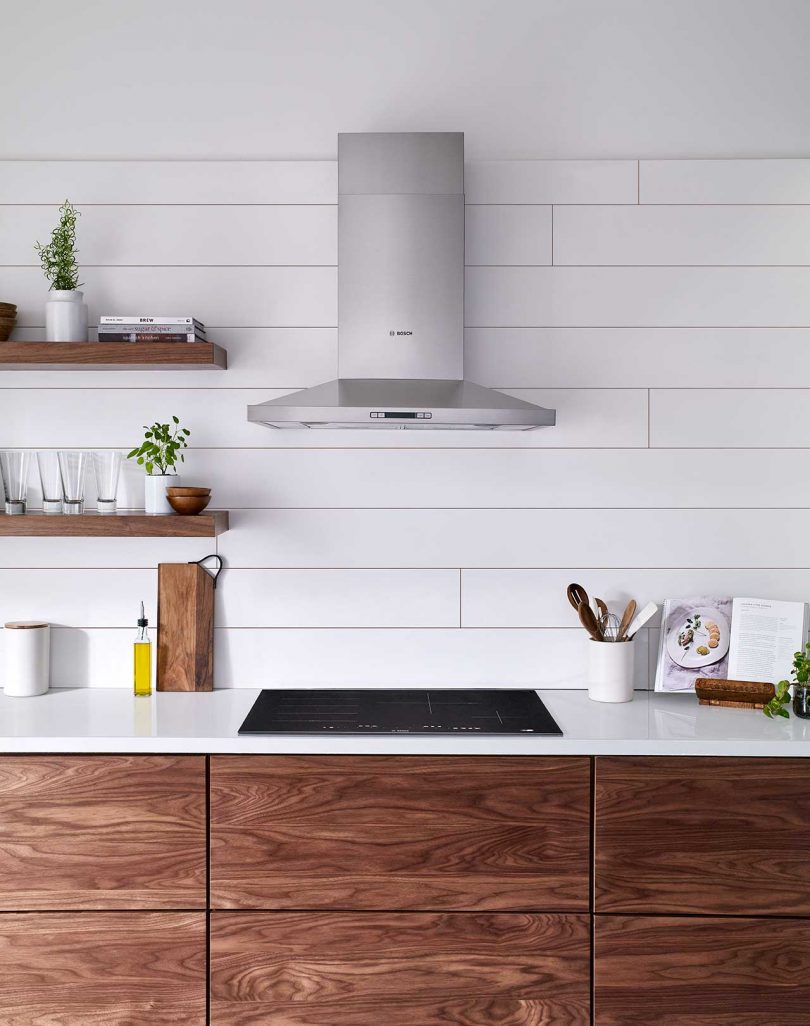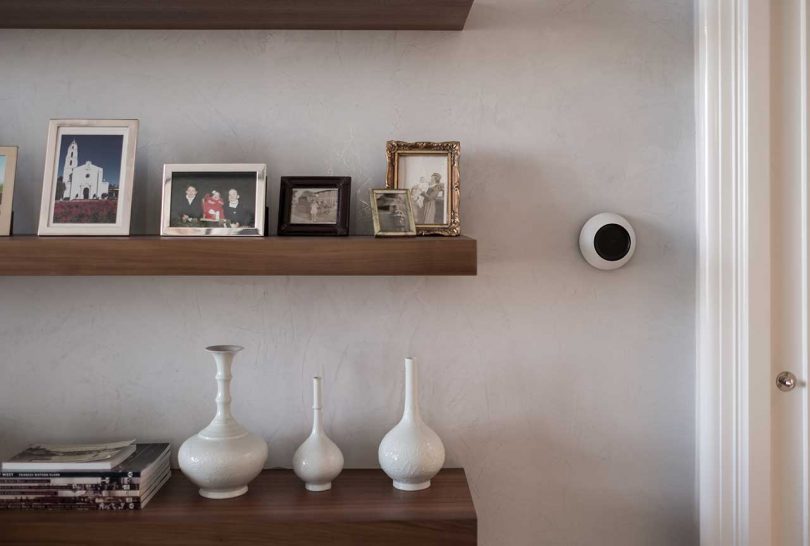Headlines have been howling for months about COVID-19 and the wildfires that have ravaged Colorado, the Pacific Northwest and California. What these two disparate disasters highlight is the need for optimum indoor air quality; both present major health risks.
Building codes cover basics like make up air requirements, toxic materials in building materials, and kitchen and bathroom ventilation. But they don’t address the difficulty of keeping a deadly virus or unhealthful smoke and ash out of a home. Healthcare designers know how to do this for hospital settings; economies of scale don’t exist for the places where we live… Yet.
Homeowners and designers are looking for solutions, from tried, true and simple, to emerging and innovative. Where do you fall in the spectrum? The answer may depend on your location, household composition and, for industry professionals, project scope.

Soltech Solutions \\\ Design/Photography: Callie England \\\ Wellness by Design (Tiller Press), © J. Gold
At the simplest level, some houseplants have been shown to have air filtration powers, but they won’t kill a deadly virus or eliminate smoke and ash. They do, however, create a welcoming atmosphere and deliver biophilia benefits. At the opposite level, smart home systems that manage indoor air quality are becoming more widely available and popular.

Smart home technology is automating indoor air quality management. \\\ Josh.ai LLC \\\ Photo: Nicholas Freeman \\\ Wellness by Design (Tiller Press), © J. Gold
Common Environmental Toxins
If you, a family member or client has chemical sensitivities or a compromised immune system, you’ve probably been educating yourself about products that off-gas toxins. Past headlines have exposed faulty laminate flooring sold by a major retailer and newer reports warn of the danger of phthalates in some popular luxury vinyl flooring products, for example. That new house smell can be deadly!
On the other hand, many manufacturers have released paint lines with no volatile organic compounds (VOCs). This is a tremendous advance, but did you know that electronics like televisions and computers can also off-gas? So can appliances, mattresses, carpeting and upholstery. What can you do about it?

Shop for furniture, cabinetry, paint and flooring that don’t off-gas toxins. \\\ Pure Upholstery, division of the Organic Mattress, Inc. \\\ Wellness by Design (Tiller Press), © J. Gold
If replacements are in the budget, you can research non-toxic alternatives to some of them through sources like the Healthy Building Network, Underwriter Laboratory’s SPOT and others. There are situations where it’s unavoidable. For example, consider the aging in place benefits of a morning kitchen for a senior’s upstairs bedroom suite. Its dishwasher might be off-gassing into your client’s sleeping area. So might the plush carpet or upholstered rocker in the nursery.

Kitchen ventilation should be quiet and effective to keep the room fresh. \\\ Bosch home appliances \\\ Wellness by Design (Tiller Press), © J. Gold
Kitchen and bathroom ventilation shortfalls are surprisingly common. In the first instance, the home is going to smell of food odors and possibly smoke, and its walls can get covered in grease over time. Inadequate or unused bathroom ventilation can result in mold and mildew issues. These are both easily addressed with widely available ventilation product upgrades.
IAQ Technology
Some of the latest ranges and cooktops on the market activate a companion vent hood automatically to prevent cooking pollutants. Sensor vent fans do the same in the bathroom, and can be a real benefit to homes with teens or seniors with memory issues who may forget to use them.
Where you can’t avoid off-gassing risks because the space calls for a sophisticated computer setup or home theater, for example, an air quality detector can spot problems, an ozone-free air purifier can help eliminate them and a smart home air quality management system can react on its own to IAQ issues.
Radon Risk
One under-appreciated air quality risk is radon exposure. Like carbon monoxide, radon is an invisible, odorless gas that can kill you. CM does it fairly quickly; radon does it slowly as the second leading cause of lung cancer after smoking.
A decade or so ago, there was a lot of hype about the radon risk of granite countertops, (driven heavily by competitive products). Experts say that the risk is low in this regard, but it’s not when it comes to basement and first floor living areas, since radon can be found in soil, particularly in some regions of the U.S.

Consider a radon test kit or detector for avoiding this silent killer. \\\ Airthings/GreenRoom \\\ Wellness by Design (Tiller Press), © J. Gold
Radon testing kits let you know if a space is impacted and radon detectors can alert you on your phone to dangerous levels. With so many more people spending extra time indoors working at home, exercising at home, schooling their children at home and potentially hosting extra family members (including seniors leaving nursing homes), checking for and eliminating radon can be especially important right now.
Smoke and Ash Dangers
If you live close to the wildfires, their smoke and ash spread are a tremendous wellness issue right now. Since the frequency and severity of these disasters has been increasing in recent years, it’s helpful to know how to address them from an IAQ perspective. Adding air purification capability to a home’s HVAC system is ideal; experts suggest a MERV-13 filter as ideal. HEPA filtration is the highest level, but not all home systems can handle it; check with the manufacturer to avoid problems.
An ozone-free air purifier or cleaner works as an alternative for those without central heat and air. You can find a guide to air filtration standards online.
Virus Transmission
The recent CDC guidance on airborne, aerosolized particle transmission of the virus that causes COVID-19 has tremendous import for indoor spaces; poorly-ventilated spaces are considered especially high risk. The addition of UV Germicidal Irradiation (UVGI) is a proven technique for addressing viruses in buildings. Some portable air cleaners have it, and it’s also being added to some built-in fixtures. Researchers are working on other UV-based safe for human exposure solutions, but these are still in various phases of development and not yet available for residential use.
Keeping windows open is also helpful, but it becomes challenging in cold weather and unsafe in smoky wildfire areas.
Final Thoughts
In these challenging times when we’re all extra-stressed, it’s important to take a deep breath and focus on long-term needs as well as short-term solutions. Indoor air quality issues tend to fall into both categories.
Author: Jamie Gold, CKD, CAPS, MCCWC is a Mayo Clinic Certified Wellness Coach, wellness design consultant and the author of three books on design and remodeling. The latest, Wellness by Design: A Room-by-Room Guide to Optimizing Your Home for Health, Fitness and Happiness, (Tiller Press) published September 1.
This post contains affiliate links, so if you make a purchase from an affiliate link, we earn a commission. Thanks for supporting Design Milk!
from WordPress https://connorrenwickblog.wordpress.com/2020/10/30/the-importance-of-indoor-air-quality/

No comments:
Post a Comment